Here's Who You Turn To For Ultra Covetable One-Of-A-Kind Jewels
Meet the world's most exclusive jewellers
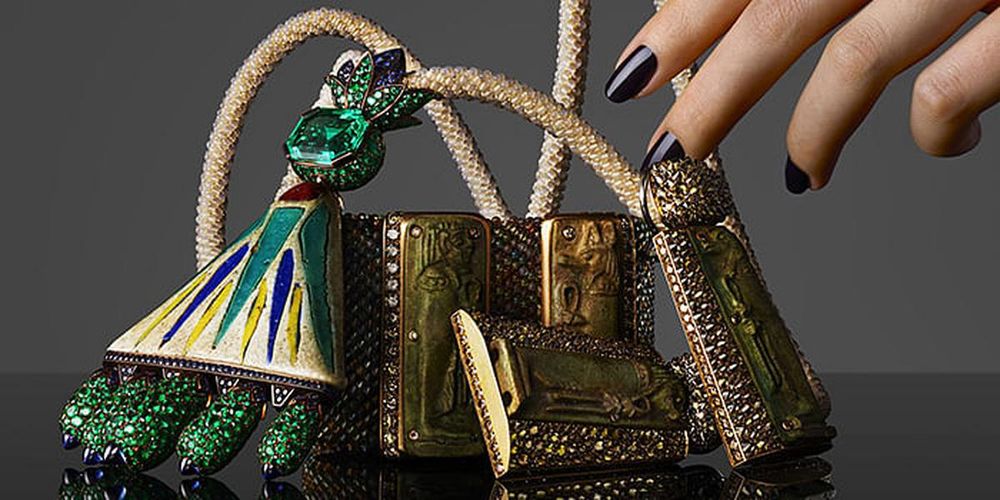
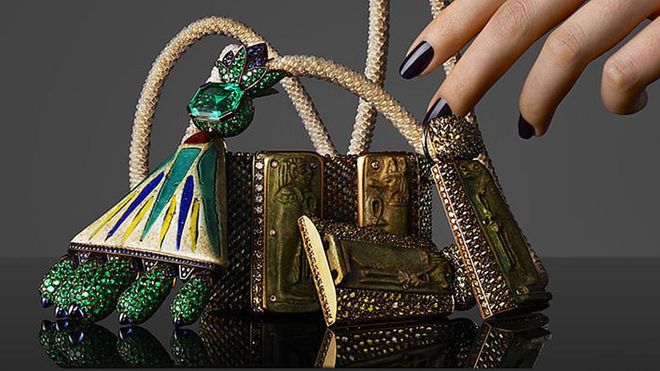
Hemmerle emerald, agate, and sapphire necklace; diamond and bronze bangle, and earrings, all with ancient Egyptian faiance amulets. Photo: Robin Broadbent
private jewellers
I call them the Super Jewelers. They create only a limited number of one-of-a-kind pieces. They sell only by appointment. They work with the rarest of stones and the most innovative of materials, and for only the most discerning of people. Their names are spoken frequently by those fluent in the secret language of jewelry snobs, but otherwise they are purposefully unknown.
In some respects their methods are rooted in traditions that hark back to the days of jewelers of the court: the highest regard for craftsmanship and quality and privacy, and a personal relationship with each of their devoted clients. But this new breed of jewelers—five of whom are represented in this portfolio—dares to carve Kashmir sapphires into aluminum rings, set Golcondas in bright pink enamel, and create cauliflower brooches in fine diamonds. Some of them, in a market that demands constant self-promotion, shun social media and refuse personal appearances.
Related article: High Manners: The Most Exquisite Pieces From Graff For The New Season
They span generations. There is the visionary Joel Arthur Rosenthal, known as JAR and considered by many to be without equal, the Superman of the Super Jewelers. And just a few weeks after this portfolio was shot I met a young jeweler in Paris named Emmanuel Tarpin. He had only a few hand-sculpted pieces to show, and he plans to keep it that way.
For Christian Hemmerle, the fourth generation in a jewelry dynasty that dates back to the Kingdom of Bavaria, this approach is the only option. “We want to produce quality, so it must remain this way. I want to follow my ancestors’ vision. Quality comes first. It is only logical to me to be available by this appointment-only system.” Hemmerle has been applying this theory since 1893, when Christian’s great-grandparents bought the business from a Munich goldsmith. By 1900 they had won an award at the Exposition Universelle in Paris for their Bishops Cross in enamel and gemstones.
What relation does that early Hemmerle piece have to the geometric shapes, mismatched earrings, and rectangular gems that are so revered today? “Absolutely nothing,” Christian once told me. “Actually, I take that back. My office is where my great-grandfather used to work. We share a vision of the handmade. And we share the importance of our workshop.”
That workshop remains, 125 years later, adjacent to the only Hemmerle boutique in the world, at 14 Maximilianstrasse, Munich. It is the only place where you can shop for Hemmerle (other than New York’s Hôtel Plaza Athénée, where Hemmerle holds private showings twice a year). is exclusivity affords the company’s creative visionaries what may be the ultimate luxury of our current era: time.
“We do what we do at our own pace. We do not force it,” Christian says. “If we come back from a buying trip with only five stones, we can just be happy we found five extraordinary things.” In this anniversary year, which will be celebrated in October with a dinner at the Temple of Dendur, at the Metropolitan Museum of Art, those extraordinary things include the three pieces seen on the previous spread, unique jewels that fuse ancient Egyptian artifacts with such trademark Hemmerle touches as stone beading and invisible hinges.
“When you celebrate an anniversary like this, you can look to the past or you can look into the future,” he says. “We wanted to merge the two. We had seen the centerpiece of the necklace in old Egyptian books, and then we discovered it at the TEFAF fair. And then other Egyptian pieces came our way. Life always opens your eyes to new ideas.” How many will ultimately become Hemmerle masterpieces for the anniversary collection? “I hope 12. The craftsmen are working on them now. But we will see.”
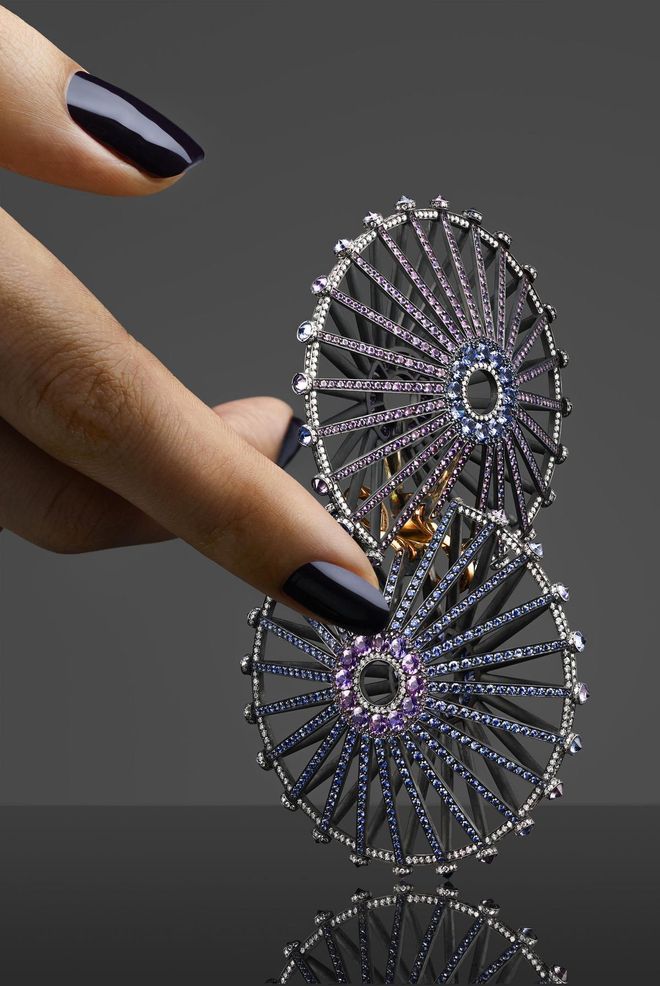
Lauren Adriana sapphire, amethyst and diamond earrings; Christian Louboutin The Noirs Nail Polish in Lady Page. Photo: Robin Broadbent
private jewellers
LAURA ADRIANA
The London-based graduate of Central Saint Martins was the subject of an exhibition at Phillips in New York and London this year. Her work, limited to fewer than 40 pieces a year, is marked by fearlessness matched with technical skill—her education required three years at the bench. Adriana believes jewelry should look forward. As a designer she creates new forms so that we may have in a piece, she says, “something that you may not have ever seen before.”
Related article: How To Take Care Of Your Jewellery

Sabba aquamarine and Peruvian Blue Opal earring. Photo: Robin Broadbent
private jewellers
SABBA
Alessandro Sabbatini is not an old master—the Italian jeweler based in Paris is just 30—but he has, since beginning his collection four years ago, become a modern one. Exceptional stones are a signature, as is lightness. And while practicality is not a word that belongs in this portfolio, these earrings are startlingly bold yet still completely wearable. He creates no more than 40 pieces a year, some of which are available at FD Gallery in New York—and acquiring them has become a competitive sport.
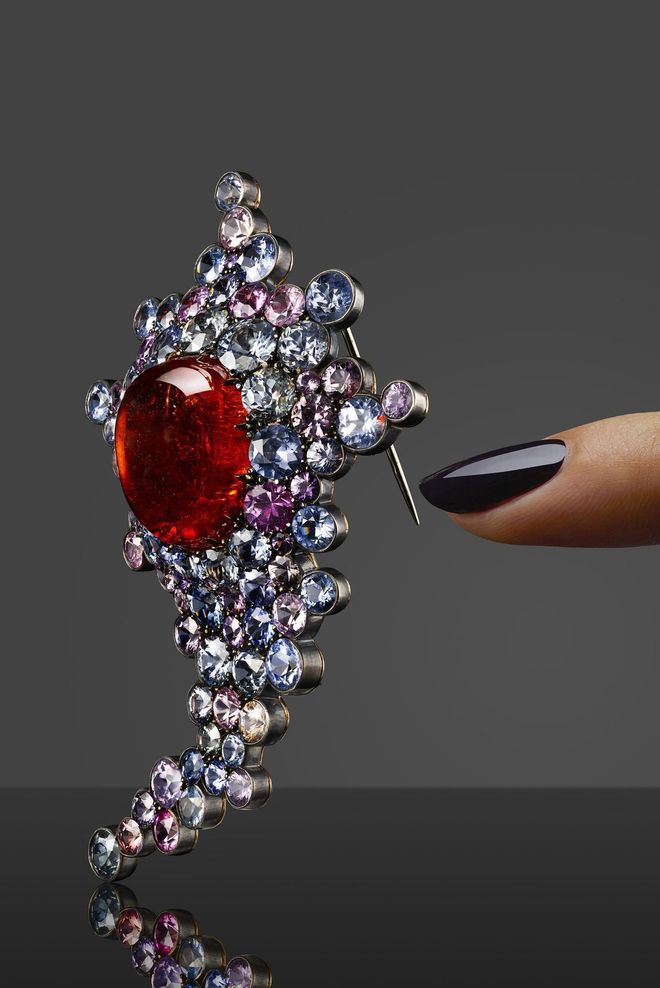
Taffin by James de Givenchy spessartite cabochon, Burma sapphire and blackened white gold brooch. Photo: Robin Broadbent
private jewellers
TAFFIN BY JAMES DE GIVENCHY
Someone once described James De Givenchy as the James Bond of the jewelry world. It might be the Ducatis, or the monogrammed shirts, the blue eyes, the blue jeans. It might be the private atelier, high above the streets of Manhattan, with its orange lacquer and brown velvet and bulletproof glass. But the comparison owes just as much to the smooth, subtle artistry of his designs. “we move forward,” Givenchy says, “but ultimately it’s about taste, how you put it together.” In his case that can be rare mandarin garnets paired with coral and spinel, or jade lined with bronze. “I create pieces I hope will never be taken apart. I am trying to safeguard a craft that is being lost.”
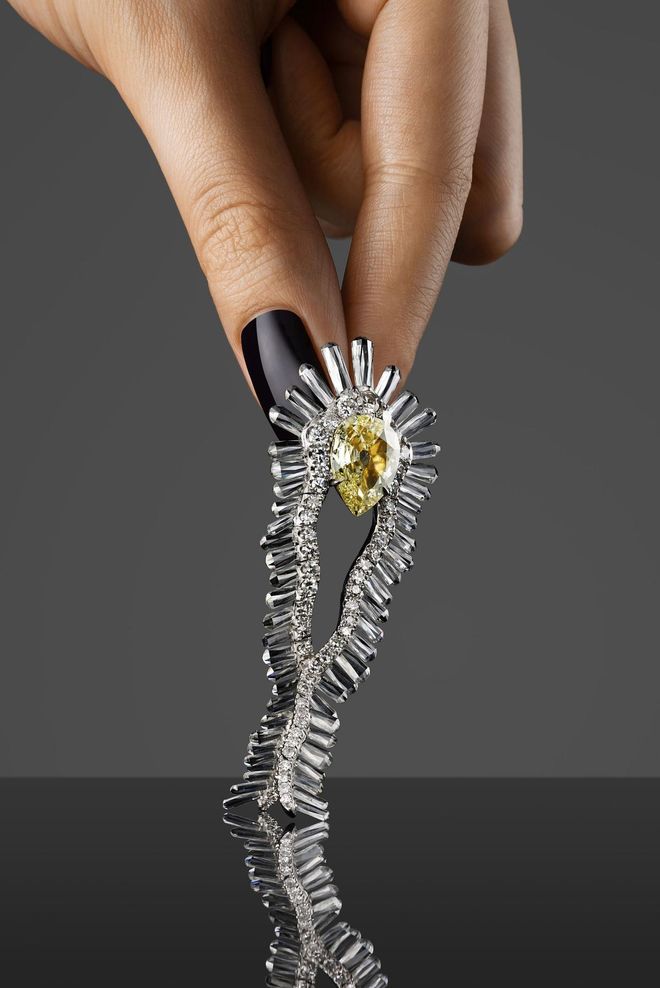
Theodoros yellow diamond and white gold earring. Photo: Robin Broadbent
private jewellers
THEODOROS
Jewelry desire is often fueled by a need to acquire what no one else has or, perhaps, what no one else even knows about yet. Thus, Theodoros Savopoulos is a wanted man. The Athens-based jeweler is almost entirely undercover, apart from the occasional Instagram images that reveal his one-of-a-kind creations—a ring with a 7-carat natural orange diamond; shoulder dusters of Paraíba tourmalines, spessartite garnets, sapphires, and rubies—or the private trunk shows he does in Aspen, or the appointments at his office, down an Athens alleyway. He is press-shy—obtaining these earrings for our photo shoot required formidable convincing—and his clients wouldn’t have it any other way.
Related article: 10 Museums To Visit If You Love Jewellery

Bhagat natural pearl and diamond ring. Photo: Robin Broadbent
private jewellers
BHAGAT
Natural pearls—now nearly extinct—are the unicorn of the jewelry world, but they are the only kind you will find in the work of Viren Bhagat, a fourth-generation Indian jeweler, whose headquarters are in Mumbai. You will also see Golconda diamonds, natural Burmese rubies, and exceptional sapphires. This strict palette of truly precious gems is a Bhagat trademark. And he has admitted that finding stones that meet his impossibly high expectations is difficult. “I travel almost every month to London or New York or Hong Kong or Geneva,” he says. “I get a call and I am on the next flight.”
This article originally appeared on Town & Country.